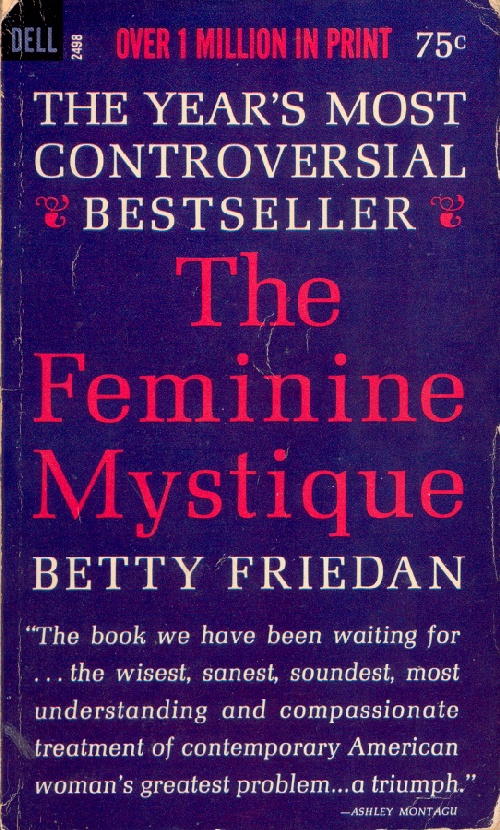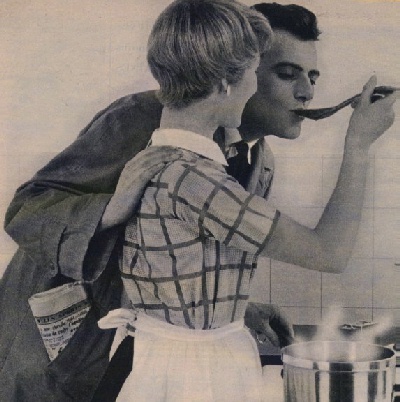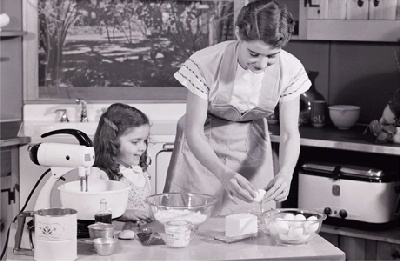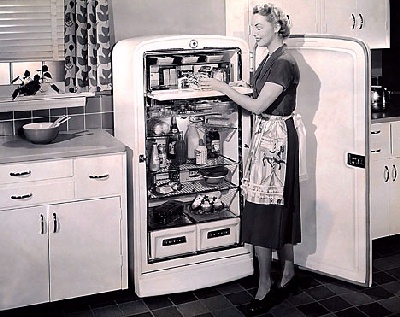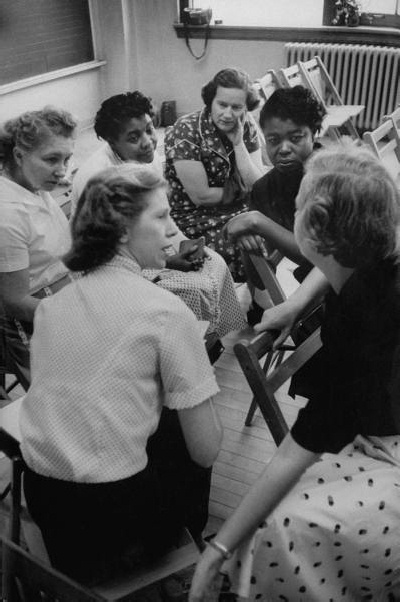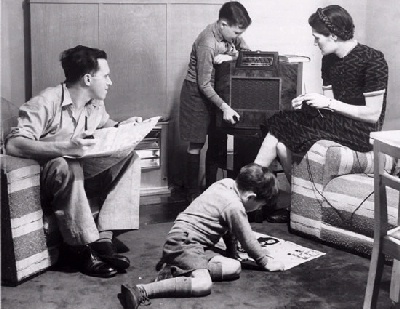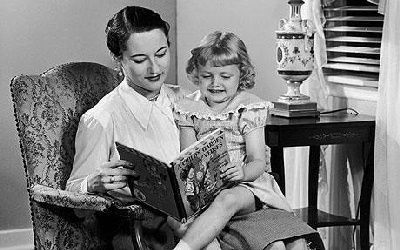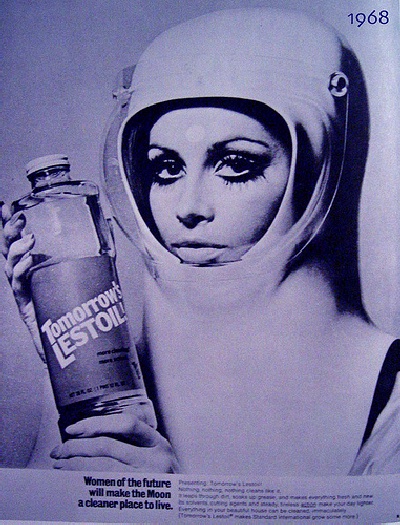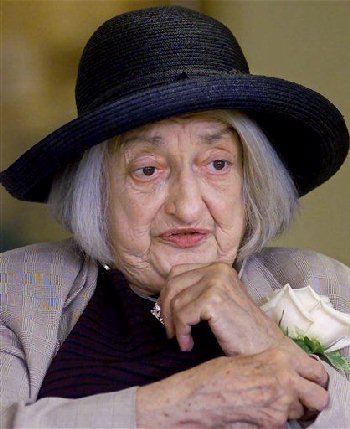 |
||||
|
The Happy Housewife Heroine
Chapter 2 of 'The Feminine Mystique'By Betty Friedan - 1963. (See also: Chapter 2: The Problem that Has No Name)
Why have so many American wives suffered this nameless aching
dissatisfaction for so many years, each one thinking she was alone?
"I've got tears in my eyes with sheer relief that my own
inner turmoil is shared with other women," a young Connecticut
mother wrote me when I first began to put this problem into words.
A woman from a town in Ohio wrote: "The times when I felt
that the only answer was to consult a psychiatrist, times of anger,
bitter bitterness and general frustration too numerous to even
mention, I had no idea that hundreds of other women were feeling
the same way. I felt so completely alone." A Houston, Texas,
housewife wrote: "It has been the feeling of being almost
alone with my problem that has made it so hard. I thank God for
my family, home and chance to care for them, but my life couldn't
stop there. It is an awakening to know that I'm not an oddity
and can stop being ashamed of wanting something more." That painful guilty silence, and that tremendous relief when a feeling is finally out in the open, are familiar psychological signs. What need, what part of themselves, could so many women today be repressing? In this age after Freud, sex is immediately s suspect. But this new stirring in women does not seem to be sex; it is, in fact, much harder for women to talk about than sex. Could there be another need, a part of themselves they have buried as deeply as the Victorian women buried sex? If there is, a woman might not know what it was, any more than the Victorian woman knew she had sexual needs. The image of a good woman by which Victorian ladies lived simply left out sex. Does the image by which modern American women live also leave some thing out, the proud and public image of the highschool girl going steady, the college girl in love, the suburban housewife with an up-and-coming husband and a station wagon full of children? This image--created by the women's magazines, by advertisements, television, movies, novels, columns and books by experts on marriage and the family, child psychology, sexual adjustment and by the popularizers of sociology and psychoanalysis--shapes women's lives today and mirrors their dreams. It may give ve a clue to the problem that has no name, as a dream gives a clue to a wish unnamed by the dreamer. In the mind's ear, a geiger counter clicks when the image shows too sharp a discrepancy from reality. A geiger counter clicked in my own inner ear when I could not fit the quiet desperation of so many women into the picture of the modern American housewife that I myself was helping to create, writing for the women's magazines. What is missing from the image which shapes the American woman's pursuit of fulfillment illment as a wife and mother? What is missing from the image that mirrors and creates the identity of women in Americatoday? In the early 1960's McCall'shas been the fastest growing of the women's magazines. Its contents are a fairly accurate representation of the image of the American woman presented, and in part created, by the large-circulation magazines. Here are the complete editorial contents of a typical issue of McCall's(July 1960):
1. A lead article on "increasing baldness in women." caused by too much brushing and dyeing. 2. A long poem in primer-size type about a child, called "A Boy Is A Boy." 3. A short story about how a teenager who doesn't go to college gets a man away from a bright college girl. 4. A short story about the minute sensations of a baby throwing his bottle out of the crib. 5. The first of a two-part intimate "up-to-date" account by the Duke of Windsor on "How the Duchess and I now live and spend our time. The influence of clothes on me and vice versa." 6. A short story about a nineteen-year-old girl sent to a charm school to learn how to bat her eyelashes and lose at tennis. ("You're nineteen, and by normal American standards, I now am entitled to have you taken off my hands, legally and financially, by some beardless youth who will spirit you away to a one-and-a-half-room apartment in the Village while he learns the chicanery of selling bonds. And no beardless youth is going to do that as long as you volley to his backhand.") 7. The story of a honeymoon couple commuting between separate bedrooms after an argument over gambling at Las Vegas. 8. An article on "how to overcome an inferiority complex." 9. A story called "Wedding Day." 10. The story of a teenager's mother who leerns how to dance rock-and-roll. 11. Six pages of glamorous pictures of models in maternity clothes. 12. Four glamorous pages on "reduce the way the models do." 13. An article on airline delays. 14. Patterns for home sewing. 15. Patterns with which to make "Folding Screens--Bewitching Magic." 16. An article called "An Encyclopedic Approach to Finding a Second Husband." 17. A "barbecue bonanza," dedicated "to the Great American Mister who stands, chef's cap on head, fork in hand, on terrace or back porch, in patio or backyard anywhere in the land, watching his roast turning on the spit. And to his wife wit without whom (sometimes) the barbecue could never be the smashing summer success it undoubtedly is . . ." There were also the regular front-of-the-book "service" columns on new drug and medicine developments, child-care facts, columns by Clare Luce and by Eleanor Roosevelt, and "Pots and Pans," a column of reader's letters. The image of woman that emerges from this big, pretty magazine is young and frivolous, almost childlike; fluffy and feminine; passive; gaily content in a world of bedroom and kitchen, sex, babies, and home. The magazine surely does not leave out sex; the only passion, the only pursuit, the only goal a woman is permitted is the pursuit of a man. It is crammed full of food, clothing, cosmetics, furniture, and the physical bodies of young women, but where is the world of though' and ideas, the life of the min d and spirit? In the magazine image women do no work except housework and work to keep their bodies beautiful and to get and keep a man. This was the image of the American woman in the year Castro led a revolution in Cuba and men were trained to travel into outer space; the year that the African continent brought forth new nations, and a plane whose speed is greater than the speed of sound broke up a Summit Conference; the year artists picketed a great museum in protest against the hegemony of abstract art; physicists explored the concept of anti-matter; astronomers, because of new radio telescopes, had to alter their concepts of the expanding universe; biologists made a breakthrough in the fundamental chemistry of life; and Negro youth in Southern schools forced the United States, for the first time since the Civil War, to face a moment of democratic truth. But this magazine, published for over 5,000,000 American women, almost all of whom have been through high school and nearly half to college, contained almost no mention of the world beyond the home. In the second half of the twentieth century in America, woman's world was confined to her own body and beauty, the charming of man, the bearing of babies, and the physical care and serving of husband, children, and home. And this was no anomaly of a single issue of a single women's magazine. I sat one night at a meeting of magazine writers, mostly men, who work for all kinds of magazines, including women's magazines. The main speaker was a leader of the desegregation battle. Before he spoke, another man outlined the needs of the large women's magazine he edited:
Our readers are housewives, full time. They're not interested in the broad public issues of the day. They are not interested in national or international affairs. They are only interested in the family and the home. They aren't interested in politics, unless it's related to an immediate need in the home, like the price of coffee. Humor? Has to be gentle, they don't get satire. Travel? We have almost completely dropped it. Education? That's a problem. Their own education level is going up. They've generally all had a highschool education and many, college. They're tremendously interested in education for their children--fourth-grade arithmetic. You just can't write about ideas or broad issues of the day for women. That's why we're publishing 90 per cent service vice now and 10 per cent general interest. Another editor agreed, adding plaintively: "Can't you give us something else besides 'there's death in your medicine cabinet'? Can't any of you dream up a new crisis for women? We're always interested in sex, of course." At this point, the writers and editors spent an hour listening to Thurgood Marshall on the inside story of the desegregation battle, and its possible effect on the presidential election. "Too bad I can't run that story," one editor said. "But you just can't link it to woman's world." As I listened to them, a German phrase echoed in my mind-- "Kinder, Kuche, Kirche,"the slogan by which the Nazis decreed that women must once again be confined to their biological role. But this was not Nazi Germany. This was America. The whole world lies open to American women. Why, then, does the image deny the world? Why does it limit women to "one position, one role, one occupation"? Not long ago, women dreamed and fought for equality, their own place in the world. What happened to their dreams; when did women decide to give up the world and go back home? A geologist brings up a core of mud from the bottom of the ocean and sees layers of sediment as sharp as a razor blade deposited over the years--clues to changes in the geological evolution of the earth so vast that they would go unnoticed during the e lifespan of a single man. I sat for many days in the New York Public Library, going back through bound volumes of American women's magazines for the last twenty years. I found a change in the image of the American woman, and in the boundaries of the woman's world, as sharp and puzzling as the changes revealed in cores of ocean sediment.
In 1939, the heroines of women's magazine stories were not always young, but in a certain sense they were younger than their fictional counterparts today. They were young in the same way that the American hero has always been young: they were New Women, creating with a gay determined spirit a new identity for women--a life of their own. There was an aura about them of becoming, of moving into a future that was going to be different from the past. The majority of heroines in the four major women's magazines (then Ladies' Home Journal, McCall's, Good Housekeeping, Woman's Home Companion)were career women--happily, proudly, adventurously, attractively career women--who loved and were loved by men. And the spirit, courage, independence, deter determination--the strength of character they showed in their work as nurses, teachers, artists, actresses, copywriters, saleswomen--were part of their charm. There was a definite aura that their individuality was something to be admired, not unattractive to me n, that men were drawn to them as much for their spirit and character as for their looks.
|
|
|||
|
|
||||
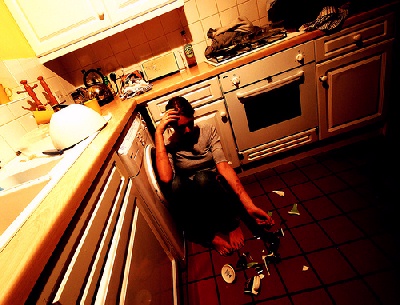
These were the mass women's magazines--in their heyday. The stories were conventional: girl-meets-boy or girl-gets-boy. But very often this was not the major theme of the story. These heroines were usually marching toward some goal or vision of their o own, struggling with some problem of work or the world, when they found their man. And this New Woman, less fluffily feminine, so independent and determined to find a new life of her own, was the heroine of a different kind of love story. She was less aggressive in pursuit of a man. Her passionate in involvement with the world, her own sense of herself as an individual her self-reliance, gave a different flavor to her relationship with the man. The heroine and hero of one of these stories meet and fall in lo ve at an ad agency where they both work. "I don't want to put you in a garden behind a wall," the hero says. "I want you to walk with me hand in hand, and together we could accomplish whatever we wanted to("A Dream to Share," Redbook,January, 1939). These New Women were almost never housewives; in fact, the stories usually ended before they had children. They were young because the future was open. But they seemed, in another sense, much older more mature than the childlike, kittenish young housewife heroines today. One, for example, is a nurse ("Mother-in- Law," Ladies' Home Journal, June, 1939). "She was, he thought, very lovely. She hadn't an ounce of picture book prettiness, but there was strength in her hands, pride in her carriage and nobility in the lift of her chin, in her blue eyes. She had been on her own ever since she left training, nine years ago. She had earned her way, she need consider nothing but her heart."
Often, there was a conflict between some commitment to her work and the man. But the moral, in 1939, was that if she kept her commitment to herself, she did not lose the man, if he was the right man. A young widow ("Between the Dark and the Daylight, " Ladies' Home Journal, February, 1939) sits in her office, debating whether to stay and correct the important mistake she has made on the job, or keep her date with a man. She thinks back on her marriage, her baby, her husband's death . . "the time afterward which held the struggle for clear judgment, not being afraid of new and better jobs, of having confidence in one's decisions" How can the boss expect her to give up her date! But she stays on the job. "They'd put their life 's blood into this campaign. She couldn't let him down." She finds her man, too--the boss! These stories may not have been great literature. But the identity of their heroines seemed to say something about the housewives who, then as now, read the women's magazines. These magazines were not written for career women. The New Woman heroines were the ideal of yesterday's housewives; they reflected the dreams, mirrored the yearning for identity and the sense of possibility that existed for women hen. And if women could not have these dreams for themselves, they wanted their daughters to have them. They wanted their daughters to be more than housewives, to go out in the world that had been denied hem. It is like remembering a long-forgotten dream, to recapture the memory of what a career meant to women before "career woman" became a dirty word in America. Jobs meant money, of course, at the end of the depression. But the readers of these magazines were not the omen who got the jobs; career meant more than job. It seemed to mean doing something, being somebody yourself, not just existing in and through others. I found the last clear note of the passionate search for individual identity that a career seems to have symbolized in the pre-1950 decades in a story called "Sarah and the Seaplane," (Ladies' Home Journal, February, 1949). Sarah, who for nineteen years has played the part of docile daughter, is secretly learning to fly. She misses her flying lesson to accompany her mother on a round of social calls. An elderly doctor houseguest says: "My dear Sarah, every day, all the time, you are committing suicide. It's a greater crime than not pleasing ot hers, not doing justice to yourself." Sensing some secret, he asks if she is in love. "She found it difficult to answer. In love? In love with the good-natured, the beautiful Henry [the flying teacher]? In love with the flashing water and the lift of wings at the instant of freedom, and the vision of the smiling, limitless world? 'Yes,' she answered, 'I think I am.'" The next morning, Sarah solos. Henry "stepped away, slamming the cabin door shut, and swung the ship about for her. She was alone. There was a heady moment when everything she had learned left her, when she had to adjust herself to be alone, entirely alone in the familiar cabin. Then she drew a deep breath and suddenly a wonderful sense of competence made her sit erect and smiling. She was alone! She was answerable to herself alone, and she was sufficient. "'I can do it!' she told herself aloud.... The wind blew back from the floats in glittering streaks, and then effortlessly the ship lifted itself free and soared." Even her mother can't stop her now from getting her flying license. She is not "afraid of discovering my own way of life." In bed that night she smiles sleepily, remembering how Henry had said, "You're my girl." "Henry's girl! She smiled. No, she was not Henry's girl. She was Sarah. And that was sufficient. And with such a late start it would be some time before she got to know herself. Half in a dream now, she wondered if at the end of that time she would need someone else and who it would be." And then suddenly the image blurs. The New Woman, soaring free, hesitates in midflight, shivers in all that blue sunlight and rushes back to the cozy walls of home. In the same year that Sarah soloed, the Ladies' Home Journal printed the prototype of the innumerable paeans to "Occupation: Housewife" that started to appear in the women's magazines, paeans that resounded throughout the fifties. They usually begin with a woman complaining that when she has to write "housewife" on the census blank, she gets an inferiority complex. ("When I write it I realize that here I am, a middle-aged woman, with a university education, and I've never made anything out of my life. I'm just a housewife.") Then the author of the paean, who somehow never is a housewife (in this case, Dorothy Thompson, newspaper woman, foreign correspondent, famous columnist, in Lad Ladies'' Home Journal, March, 1949), roars with laughter. The trouble with you, she scolds, is you don't realize you are expert in a dozen careers, simultaneously. "You might write: business manager, cook, nurse, chauffeur, dressmaker, interior decorator, accountant, caterer, teacher, private secretary--or just put down philanthropist.... All your life you have been giving away your energies, your skills, your talents, your services,, for love." But still, the housewife complains, I'm nearly fifty and I've never done what I hoped to do in my youth--music--I've wasted my college education. Ho-ho, laughs Miss Thompson aren't your children musical because of you, and all those struggling years while your husband was finishing his great work, didn't you keep a charming home on 53,000 a year, and make all your children's clothes and your own, a and paper the living room yourself, and watch the markets like a hawk for bargains? And in time off, didn't you type and proofread your husband's manuscripts, plan festivals to make up the church deficit, play piano duets with the children to make practice more fun, read their books in highschool to follow their study? "But all this vicarious living--through others," the housewife sighs. "As vicarious as Napoleon Bonaparte," Miss Thompson scoffs, "or a Queen. I simply refuse to share your selfpity. You are one of the most successful women I know." As for not earning any money, the argument goes, let the housewife compute the cost of her services. Women can save more money by their managerial talents inside the home than they can bring into it by outside work. As for woman's spirit being broken by t he boredom of household tasks, maybe the genius of some women has been thwarted, but "a world full of feminine genius, but poor in children, would come rapidly to an end.... Great men have great mothers."
And the American housewife is reminded that Catholic countries in the Middle Ages "elevated the gentle and inconspicuous Mary into the Queen of Heaven, and built their loveliest cathedrals to 'Notre Dame--Our Lady.' . . . The homemaker, the nurturer, the creator of children's environment is the constant recreator of culture, civilization, and virtue. Assuming that she is doing well that great managerial task and creative activity, let her write her occupation proudly: 'housewife.' " In 1949, the Ladies' Home Journal also ran Margaret Mead's Male and Female. All the magazines were echoing Farnham and Lundberg's Modern Woman: The Lost Sex,which came out in 1942, with its warning that careers and higher education w ere leading to the "masculinization of women with enormously dangerous consequences to the home, the children dependent on it and to the ability of the woman, as well as her husband, to obtain sexual gratification." And so the feminine mystique began to spread through the land, grafted onto old prejudices and comfortable conventions which so easily give the past a stranglehold on the future. Behind the new mystique were concepts and theories deceptive in their sophistication and their assumption of accepted truth. These theories were supposedly so complex that they were inaccessible to all but a few initiates, and therefore irrefutable. It will be necessary to break through this wall of mystery and look more closely at these complex concepts, these accepted truths, to understand fully what has happened to American women. The feminine mystique says that the highest value and the only commitment for women is the fulfillment of their own femininity. It says that the great mistake of Western culture, through most of its history, has been the undervaluation of this femininity. It says this femininity is so mysterious and intuitive and close to the creation and origin of life that man-made science may never be able to understand it. But however special and different, it is in no way inferior to the nature of man; it may even in certain respects be superior. The mistake, says the mystique, the root of women's troubles in the past is that women envied men, women tried to be like men, instead of accepting their own nature, which can find fulfillment only in sexual passivity, male domination, and nurturing maternal love. But the new image this mystique gives to American women is the old image: "Occupation: housewife." The new mystique makes the housewife-mothers, who never had a chance to be anything else, the model for all women; it presupposes that history has reached a final and glorious end in the here and now, as far as women are concerned. Beneath the sophisticated trappings, it simply makes certain concrete, finite, domestic aspects of feminine existence--as it was lived by women whose lives were confined, by necessity, to cooking, cleaning, washing, bearing children--into a religion, a pattern by which all women must now live or deny their femininity. Fulfillment as a woman had only one definition for American women after 1949--the housewife-mother. As swiftly as in a dream, the image of the American woman as a changing, growing individual in a changing world was shattered. Her solo flight to find her own identity was forgotten in the rush for the security of togetherness. Her limitless world shrunk to the cozy walls of home. The transformation, reflected in the pages of the women's magazines, was sharply visible in 1949 and progressive through the fifties. "Femininity Begins at Home," "It's a Man's World Maybe," "Have Babies While You're Young, " "How to Snare a Male," "Should I Stop Work When We Marry?" "Are You Training Your Daughter to be a Wife?" "Careers at Home," "Do Women Have to Talk So Much?" "Why GI's Prefer Those German Girls ," "What Women Can Learn from Mother Eve," "Really a Man's World, Politics," "How to Hold On to a Happy Marriage," "Don't Be Afraid to Marry Young," "The Doctor Talks about Breast-Feeding," "Our Baby Was Born at Home," "Cooking to Me is Poetry," "The Business of Running a Home." By the end of 1949, only one out of three heroines in the women's magazines was a career woman--and she was shown in the act of renouncing her career and discovering that what she really wanted to be was a housewife. In 1958, and again in 1959, I we went through issue after issue of the three major women's magazines (the fourth, Woman's Home Companion, had died) without finding a single heroine who had a career, a commitment to any work, art, profession, or mission in the world, other than "Occupation: housewife." Only one in a hundred heroines had a job; even the young unmarried heroines no longer worked except at snaring a husband. These new happy housewife heroines seem strangely younger than the spirited career girls of the thirties and forties. They seem to get younger all the time--in looks, and a childlike kind of dependence. They have no vision of the future. except to have a baby. The only active growing figure in their world is the child. The housewife heroines are forever young, because their own image endsin childbirth. Like Peter Pan, they must remain young, while their children grow up with the world. They must keep on having babies, because the feminine mystique says there is no other way for a woman to be a heroine. Here is a typical specimen from a story called "The Sandwich Maker" (Ladies' Home Journal, April, 1959). She took home economics in college, learned how to cook, never held a job, and still plays the child bride, though she now has three children of her own. Her problem is money. "Oh nothing boring, like taxes or reciprocal trade agreements, or foreign aid programs. I leave all that economic jazz to my constitutionally elected representative in Washington, heaven help him." The problem is her $42 allowance. She hates having to ask her husband for money every time she needs a pair of shoes, but he won't trust her with a charge account. "Oh, how I yearned for a little money of my own! Not much, really. A few hundred a year would have done it. Just enough to meet a friend for lunch occasionally, to indulge in extravagantly colored stockings, a few small items, without having to appeal to Charley. But, alas, Charley was right. I had never earned a dollar in my life, and had no idea how money was made. So all 1 did for a long time was brood, as I continued with my cooking, cleaning, cooking, washing, ironing, cooking."
At last the solution comes--she will take orders for sandwiches from other men at her husband's plant. She earns $52.50 a week, except that she forgets to count costs, and she doesn't remember what a gross is so she has to hide 8,640 sandwich bags behind the furnace. Charley says she's making the sandwiches too fancy. She explains: "If it's only ham on rye, then I'm just a sandwich maker, and I'm not interested. But the extras, the special touches--well, they make it sort of creative." So she chop s, wraps, peels, seals, spreads bread, starting at dawn and never finished, for $9.00 net, until she is disgusted by the smell of food, and finally staggers downstairs after a sleepless night to slice a salami for the eight gaping lunch boxes. "It wa s too much. Charley came down just then, and after one quick look at me, ran for a glass of water." She realizes that she is going to have another baby. "Charley's first coherent words were 'I'll cancel your lunch orders. You're a mother. That's your job. You don't have to earn money, too.' It was all so beautifully simpler 'Yes, boss,' I murmured obediently, frankly relieved." That night he brings her home a checkbook; he will trust her with a joint account. So she decides just to keep quiet about the 8,640 sandwich bags. Anyhow, she'll have used them up, making sandwiches for four children to take to school, by the time the youngest is ready for college. The road from Sarah and the seaplane to the sandwich maker was traveled in only ten years. In those ten years, the image of American woman seems to have suffered a schizophrenic split. And the split in the image goes much further than the savage obliteration of career from women's dreams. In an earlier time, the image of woman was also split in two--the good, pure woman on the pedestal, and the whore of the desires of the flesh. The split in the new image opens a different fissure--the feminine woman, whose goodness includes the desires of the flesh, and the career woman whose evil includes every desire of the separate self. The new feminine morality story is the exorcising of the forbidden career dream, the heroine's victory over Mephistopheles: the devil, first in the form of a care er woman, who threatens to take away the heroine's husband or child, and finally, the devil inside the heroine herself, the dream of independence, the discontent of spirit, and even the feeling of a separate identity that must be exorcised to win or keep the love of husband and child. In a story in Redbook("A Man Who Acted Like a Husband," November, 1957) the child-bride heroine, "a little freckle-faced brunette" whose nickname is "Junior," is visited by her old college roommate. The roommate Kay is "a man's girl, really, with a good head for business . . . she wore her polished mahogany hair in a high chignon, speared with two chopstick affairs." Kay is not only divorced, but she has also left her child with his grandmother while she works in television. This career-woman-devil tempts Junior with the lure of a job to keep her from breast-feeding her baby. She even restrains the young mother from going to her baby when he cries at 2 A.M. But she gets her comeuppance when George, the husband, discovers the crying baby uncovered, in a freezing wind from an open window, with blood running down its cheek. Kay, reformed and repentant, plays hookey from her job to go get her own child and start life anew. And Junior, gloating at the 2 A. M. feeding--"I'm glad, glad, glad I'm just a housewife" starts to dream about the baby, growing up to be a housewife, too. With the career woman out of the way, the housewife with interests in the community becomes the devil to be exorcised. Even PTA takes on a suspect connotation, not to mention interest in some international cause (see "Almost a Love Affair," M McCall's,November, 1955). The housewife who simply has a mind of her own is the next to go. The heroine of "I Didn't Want to Tell You" (McCall's,January, 1958) is shown balancing the checkbook by herself and arguing with her husband about a small domestic detail. It develops that she is losing her husband to a "helpless little widow" whose main appeal is that she can't "think straight" about an insurance policy or mortgage. The betrayed wife says: "She must have sex appeal and what weapon has a wife against that?" But her best friend tells her: "You're making this too simple. You're forgetting how helpless Tania can be, and how grateful to the man who helps her . . ." "I couldn't be a clinging vine if I tried," the wife says. "I had a better than average job after I left college and I was always a pretty independent person. I'm not a helpless little woman and I can't pretend to be." But she learns, that night. She hears a noise that might be a burglar; even though she knows it's only a mouse, she calls helplessly to her husband, and wins him back. As he comforts her pretended panic, she murmurs that, of course, he was right in their argument that morning. "She lay still in the soft bed, smiling sweet, secret satisfaction, scarcely touched with guilt." The end of the road, in an almost literal sense, is the disappearance of the heroine altogether, as a separate self and the subject of her own story. The end of the road is togetherness, where the woman has no independent self to hide even in guilt; she exists only for and through her husband and children. Coined by the publishers of McCall'sin 1954, the concept "togetherness" was seized upon avidly as a movement of spiritual significance by advertisers, ministers, newspaper editors. For a time, it was elevated into virtually a national repose. But very quickly there was sharp social criticism, and bitter jokes about "togetherness" as a substitute for larger human goals--for men. Women were taken to task for making their husbands do housework, instead of letting them pioneer in t he nation and the world. Why, it was asked, should men with the capacities of statesmen, anthropologists, physicists, poets, have to wash dishes and diaper babies on weekday evenings or Saturday mornings when they might use those extra hours to fulfill la larger commitments to their society? Significantly, critics resented only that men were being asked to share "woman's world." Few questioned the boundaries of this world for women. No one seemed to remember that women were once thought to have the capacity and vision of statesmen, poets, and physicists. Few saw the big lie of togetherness for women. Consider the Easter 1954 issue of McCall's which announced the new era of togetherness, sounding the requiem for the days when women fought for and won political equality, and the women's magazines "helped you to carve out large areas of living formerly forbidden to your sex." The new way of life in which "men and women in ever increasing numbers are marrying at an earlier age, having children at an earlier age, rearing larger families and gaining their deepest satisfaction" from their own homes, is one which "men, women and children are achieving together . . . not as women alone, or men alone, isolated from one another, but as a family, sharing a common experience."
The picture essay detailing that way of life is called "a man's place is in the home." It describes, as the new image and ideal, a New Jersey couple with three children in a gray-shingle split-level house. Ed and Carol have "centered their lives almost completely around their children and their home." They are shown shopping at the supermarket, carpentering, dressing the children, making breakfast together. "Then Ed joins the members of his car pool and heads for the office." Ed, the husband, chooses the color scheme for the house and makes the major decorating decisions. The chores Ed likes are listed: putter around the house, make things, paint, select furniture, rugs and draperies, dry dishes, read to the children and put t hem to bed, work in the garden, feed and dress and bathe the children, attend PTA meetings, cook, buy clothes for his wife, buy groceries. Ed doesn't like these chores: dusting, vacuuming, finishing jobs he's started, hanging draperies, washing pots and pans and dishes, picking up after the children, shoveling snow or mowing the lawn, changing diapers, taking the baby-sitter home, doing the laundry, ironing. Ed, of course, does not do these chores. For the sake of every member of the family, the family needs a head. This means Father, not Mother.... Children of both sexes need to learn, recognize and respect the abilities and functions of each sex.... He is not just a substitute mother, even though he's ready and willing to do his share of bathing, feeding, comforting, playing. He is a link with the outside world he works in. If in that world he is interested, courageous, tolerant, constructive, he will pass on these values to his children. There were many agonized editorial sessions, in those days at McCall's. "Suddenly, everybody was looking for this spiritual significance in togetherness, expecting us to make some mysterious religious movement out of the life everyone had been leading for the last five years--crawling into the home, turning their backs on the world--but we never could find a way of showing it that wasn't a monstrosity dullness," a former McCall'seditor reminisces. "It always boiled down to, goody, goody, goody, Daddy is out there in the garden barbecuing. We put men in the fashion pictures and the food pictures, and even the perfume pictures. But we were stifled by it editorially. "We had articles by psychiatrists that we couldn't use because they would have blown it wide open: all those couples propping their whole weight on their kids but what else could you do with togetherness but child care? We were pathetically grateful to find anything else where we could show father photographed with mother. Sometimes, we used to wonder what would happen to women, with men taking over the decorating, child care, cooking, all the things that used to be hers alone. But we couldn't show women getting out of the home and having a career. The irony is, what we meant to do was to stop editing for women as women, and edit for the men and women together. We wanted to edit for people, not women." But forbidden to join man in the world, can women be people? Forbidden independence, they finally are swallowed in an image of such passive dependence that they want men to make the decisions, even in the home. The frantic illusion that togetherness can impart a spiritual content to the dullness of domestic routine, the need for a religious movement to make up for the lack of identity, betrays the measure of women's loss and the emptiness of the image. Could making men share the housework compensate women for their loss of the world? Could vacuuming the living-room floor together give the housewife some mysterious new purpose in life? In 1956, at the peak of togetherness, the bored editors of McCall's ran a little article called "The Mother Who Ran Away." To their amazement, it brought the highest readership of any article they had ever run. "It was our moment of truth," said a former editor. "We suddenly realized that all those women at home with their three and a half children were miserably unhappy." But by then the new image of American woman, "Occupation: housewife," had hardened into a mystique, unquestioned and permitting no questions, shaping the very reality is distorted. By the time I started writing for women's magazines, in the fifties, it was simply taken for granted by editors, and accepted as an immutable fact of life by writers, that women were not interested in politics, life outside the United States, national issues, art, science, ideas, adventure, education, or even their own communities, except where they could be sold through their emotions as wives and mothers. Politics, for women, became Mamie's clothes and the Nixons' home life. Out of conscience, a sense of duty, the Ladies' Home Journal might run a series like "Political Pilgrim's Progress," showing women trying to improve their children's schools and playgrounds. But even approaching politics through mother love did not really interest women, it was thought in the trade. Everyone knew those readership percentages. An editor of Redbook ingeniously tried to bring the bomb down to the feminine level by showing the emotions of a wife whose husband sailed into a contaminated area. "Women can't take an idea, an issue, pure," men who edited the mass women's magazines agreed. "It had to be translated in terms they can understand as women." This was so well understood by those who wrote for women's magazines that a natural childbirth expert submitted an article to a leading woman's magazine called "How to Have a Baby in a Atom Bomb Shelter." "The article was not well written," an editor told me, "or we might have bought it." According to the mystique, women, in their mysterious femininity, might be interested in the concrete biological details of having a baby in a bomb shelter, but never in the abstract idea of the bomb's power to destroy the human race. Such a belief, of course, becomes a self-fulfilling prophecy. In 1960, a perceptive social psychologist showed me some sad statistics which seemed to prove unmistakably that American women under thirty-five are not interested in politics. "They may have the vote, but they don't dream about running for office," he told me. "If you write a political piece, they won't read it. You have to translate it into issues they can understand--romance, pregnancy, nursing, home furnishings, clothes. Run a n article on the economy, or the race question, civil rights, and you'd think that women had never heard of them." Maybe they hadn't heard of them. Ideas are not like instincts of the blood that spring into the mind intact. They are communicated by education, by the printed word. The new young housewives, who leave high school or college to marry, do not read books, the psychological surveys say. They only read magazines. Magazines today assume women are not interested in ideas. But going back to the bound volumes in the library, I found in the thirties and forties that the mass-circulation magazines like Ladies' Home Journal carried hundreds of articles about the world outside the home. "The first inside story of American diplomatic relations preceding declared war"; "Can the U.S. Have Peace After This War?" by Walter Lippmann; "Stalin at Midnight," by Harold Stassen; "General Stilwell Reports on China"; articles about the last days of Czechoslovakia by Vincent Sheean; the persecution of Jews in Germany; the New Deal; Carl Sandburg's account of Lincoln's assassination; Faulkner's stories of Mississippi, and Margaret Sanger's battle for birth control. In the 1950's they printed virtually no articles except those that serviced women as housewives, or described women as housewives, or permitted a purely feminine identification like the Duchess of Windsor or Princess Margaret. "If we get an article a bout a woman who does anything adventurous, out of the way, something by herself, you know, we figure she must be terribly aggressive, neurotic," a Ladies' Home Journal editor told me. Margaret Sanger would never get in today. In 1960, I saw statistics that showed that women under thirty-five could not identify with a spirited heroine of a story who worked in an ad agency and persuaded the boy to stay and fight for his principles in the big city instead of running home to the security of a family business. Nor could these new young housewives identify with a young minister, acting on his belief in defiance of convention. But they had no trouble at all identifying with a young man paralyzed at eighteen. ("I regained consciousness to discover that I could not move or even speak. I could wiggle only one finger of one hand." With help from faith and a psychiatrist, "I am now finding reasons to live as fully as possible.") Does it say something about the new housewife readers that, as any editor can testify, they can identify completely with the victims of blindness, deafness, physical maiming, cerebral palsy, paralysis, cancer, or approaching death? Such articles about people who cannot see or speak or move have been an enduring staple of the women's magazines in the era of "Occupation: housewife." They are told with infinitely realistic detail over and over again, replacing the articles about the nation, the world, ideas, issues, art and science; replacing the stories about adventurous spirited women. And whether the victim is man, woman or child, whether the living death is incurable cancer or creeping paralysis, the housewife reader can identify....
A baked potato is not as big as the world, and vacuuming the living room floor--with or without makeup--is not work that takes enough thought or energy to challenge any woman's full capacity. Women are human beings, not stuffed dolls, not animals. Down through the ages man has known that he was set apart from other animals by his mind's power to have an idea, a vision, and shape the future to it. He shares a need for food and sex with other animals, but when he loves, he loves as a man, and when he discovers and creates and shapes a future different from his past, he is a man, a human being. This is the real mystery: why did so many American women, with the ability and education to discover and create, go back home again, to look for "something more" in housework and rearing children? For paradoxically, in the same fifteen years in which the spirited New Woman was replaced by the Happy Housewife, the boundaries of the human world have widened, the pace of world change has quickened, and the very nature of human reality has become increasingly free from biological and material necessity. Does the mystique keep American woman from growing with the world? Does it force her to deny reality, as a woman in a mental hospital must deny reality to believe she is a queen? Does it doom women to be displaced persons, if not virtual schizophrenics, in our complex, changing world? It is more than a strange paradox that as all professions are finally open to women in America, "career woman" has become a dirty word; that as higher education becomes available to any woman with the capacity for it, education for women has become so suspect that more and more drop out of high school and college to marry and have babies; that as so many roles in modern society become theirs for the taking, women so insistently confine themselves to one role. Why, with the removal of all the legal, political, economic, and educational barriers that once kept woman from being man's equal, a person in her own right, an individual free to develop her own potential, should she accept this new image which insists she is not a person but a "woman," by definition barred from the freedom of human existence and a voice in human destiny? The feminine mystique is so powerful that women grow up no longer knowing that they have the desires and capacities the mystique forbids. But such a mystique does not fasten itself on a whole nation in a few short years, reversing the trends of a century, without cause. What gives the mystique its power? Why did women go home again?
The Feminine MystiqueFebruary 4, 1921 – February 4, 2006 The Feminine Mystique by Betty Friedan was published February 19th 1963 by W.W. Norton and Co., and talks about the lack of fulfillment in many women's lives, which they have generally kept hidden. The book was influential in the contemporary women's movement in 1963 and as a result permanently transformed the social fabric of the United States and countries around the world and is widely regarded as one of the most influential nonfiction books of the 20th century. Friedan started writing The Feminine Mystique after she sent a questionnaire to other women in her 1942 Smith College graduating class and discovered women in her class indicated a general unease with their lives. Using her findings, Friedan hypothesized that women are victims of a false belief system that requires them to find identity and meaning in their lives through their husbands and children and that women want more than just being a homemaker and to explore their identity outside of that role. Friedan focuses on post-World War II middle-class suburban communities. She suggests that men returning from war turned to their wives for mothering and at the same time America's post-war economic boom led to new technologies that were supposed to make household work less difficult, but often had the result of making women's work less meaningful and valuable. So if women weren't needed in the home any more, they needed a new identity.
|
||||
 |
|
 |
||
